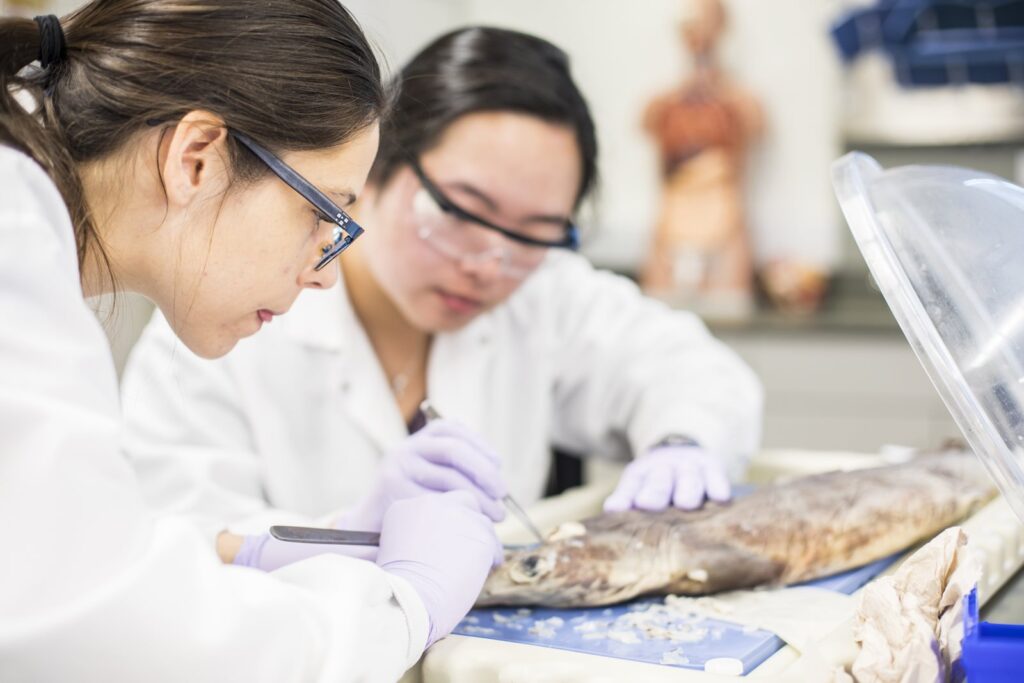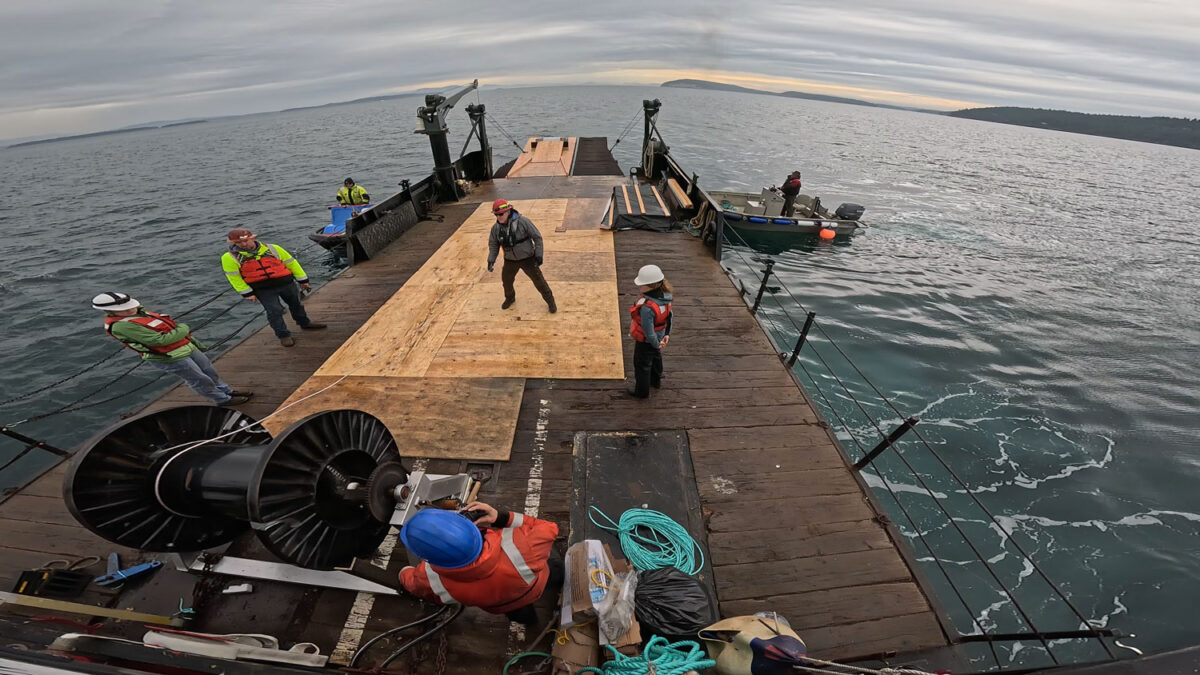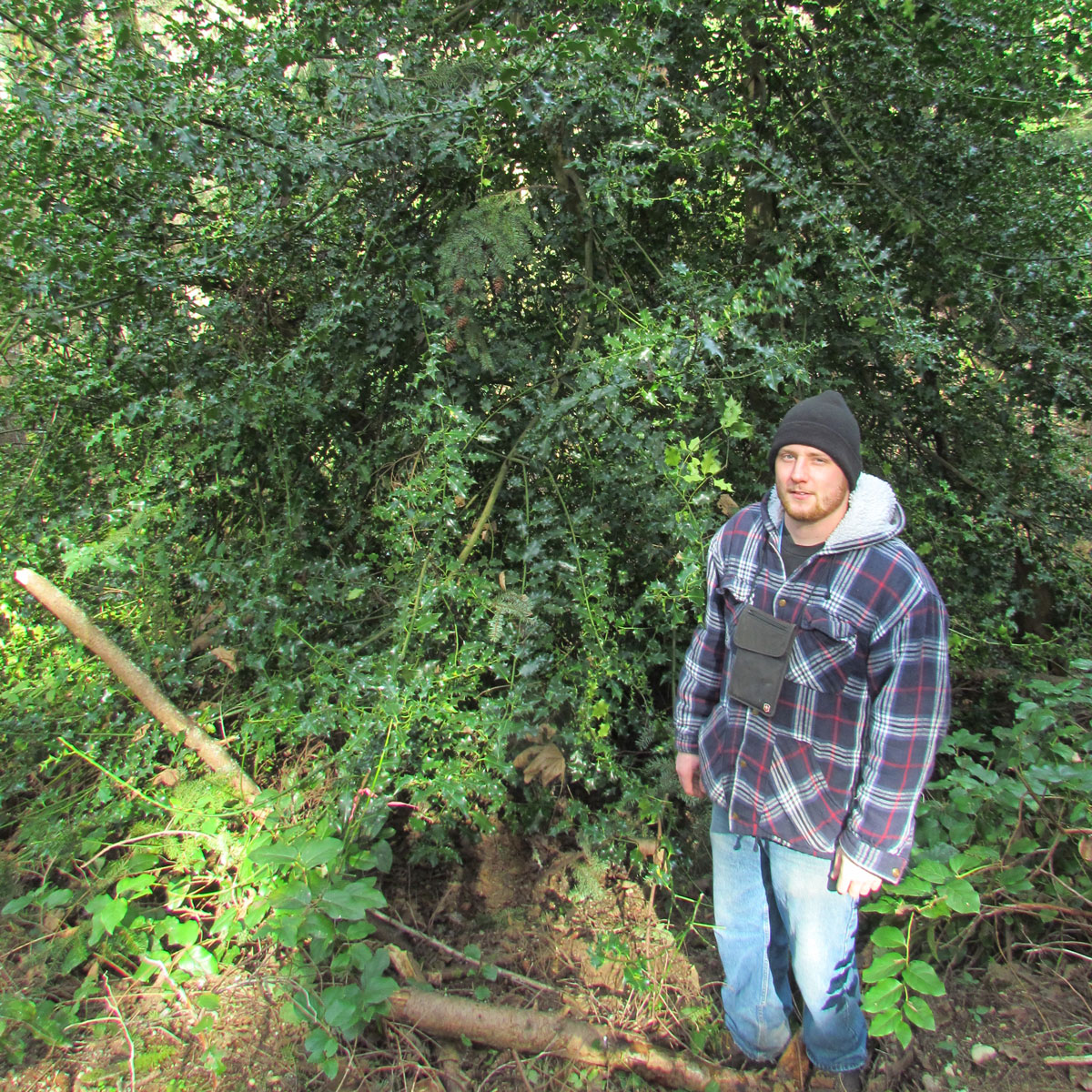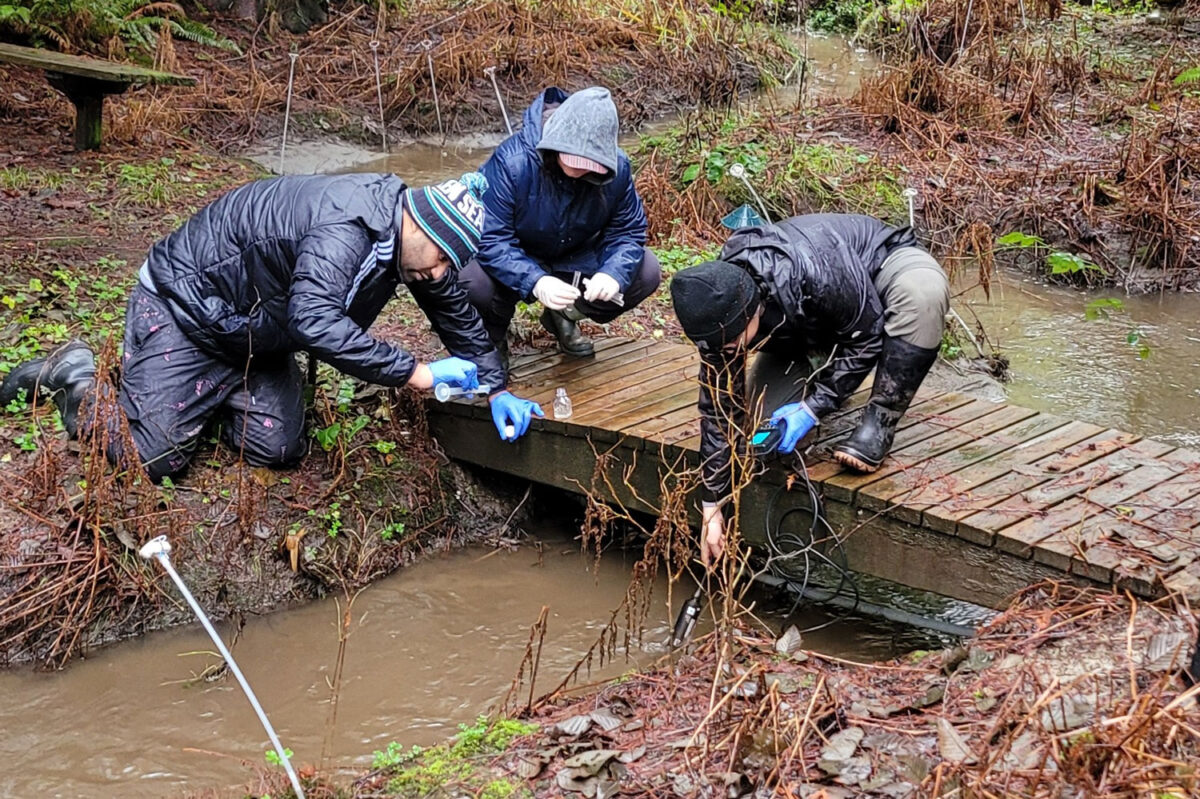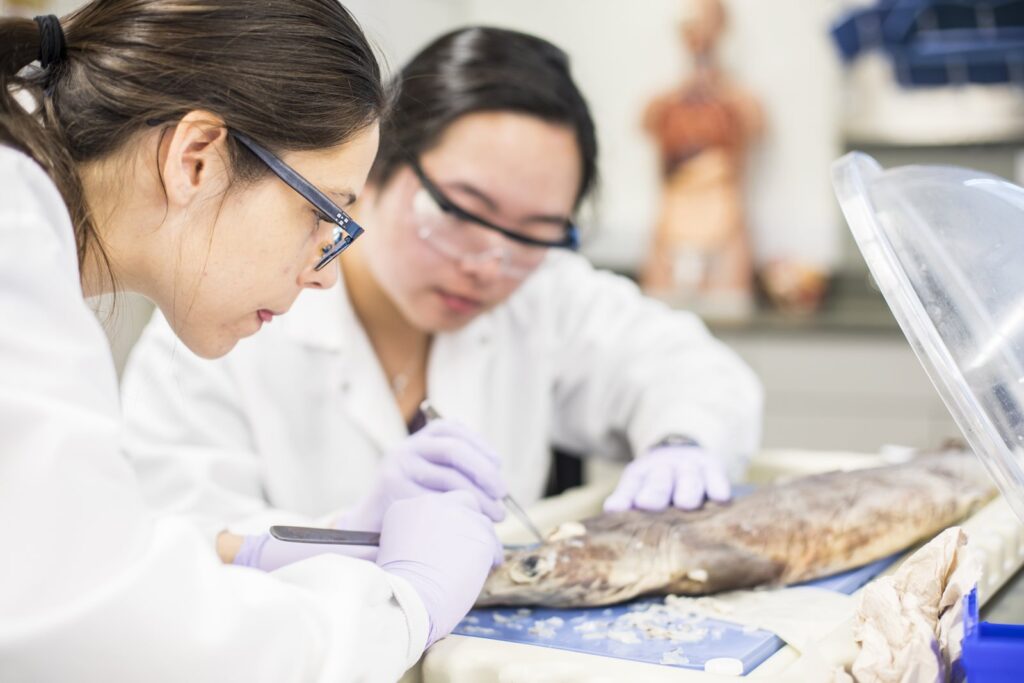
Photos by Mark Stone
Story by Douglas Esser
They named their shark Sharkira.
It was a soft-hearted moment for one group of students in a University of Washington Bothell science laboratory who had been intently dissecting the shark’s brain to study its structure.
About 20 students huddled around five tables in the Discovery Hall lab, each group working on a 2-foot long, formaldehyde-gray dogfish shark provided by a biological supply company. After their brains advanced science education, Sharkira and the other sharks went into plastic bags so a future class could dissect other organs.
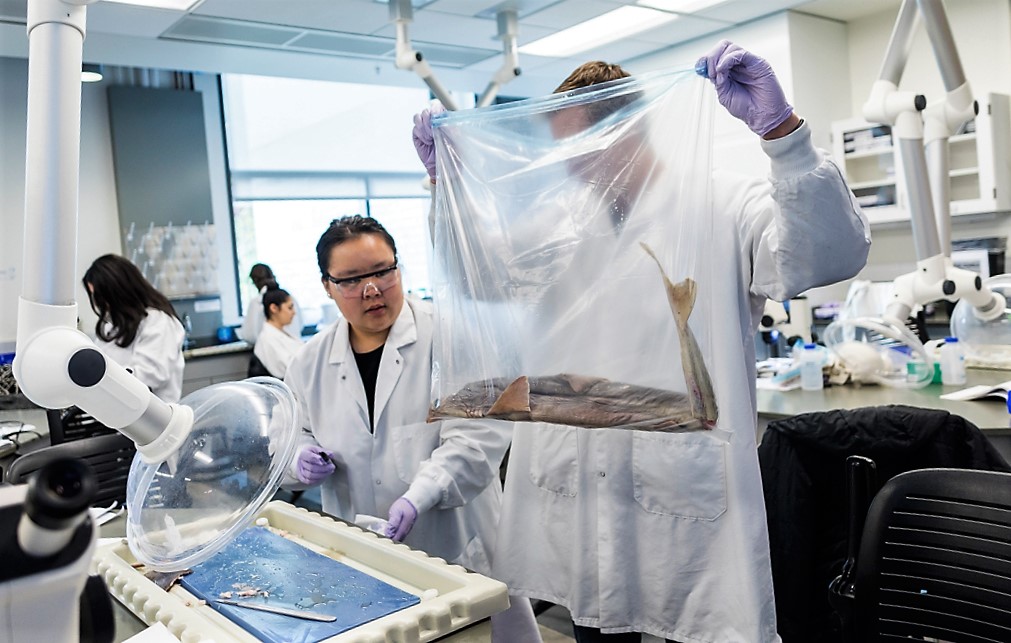
The Oct. 26 class was one day in the course of BIO 351, Principles of Physiology and Anatomy, Part 1, taught by Michele Price, a lecturer in the School of Science, Technology, Engineering & Mathematics, Division of Biological Science. It’s a popular class with biology majors on the pre-med path. Studying the structure and function of body parts is crucial to their learning.
“I like lab to be about this hands-on experience — to touch it, to see it and then to think about how it works in the bigger context of all animals,” Price said.
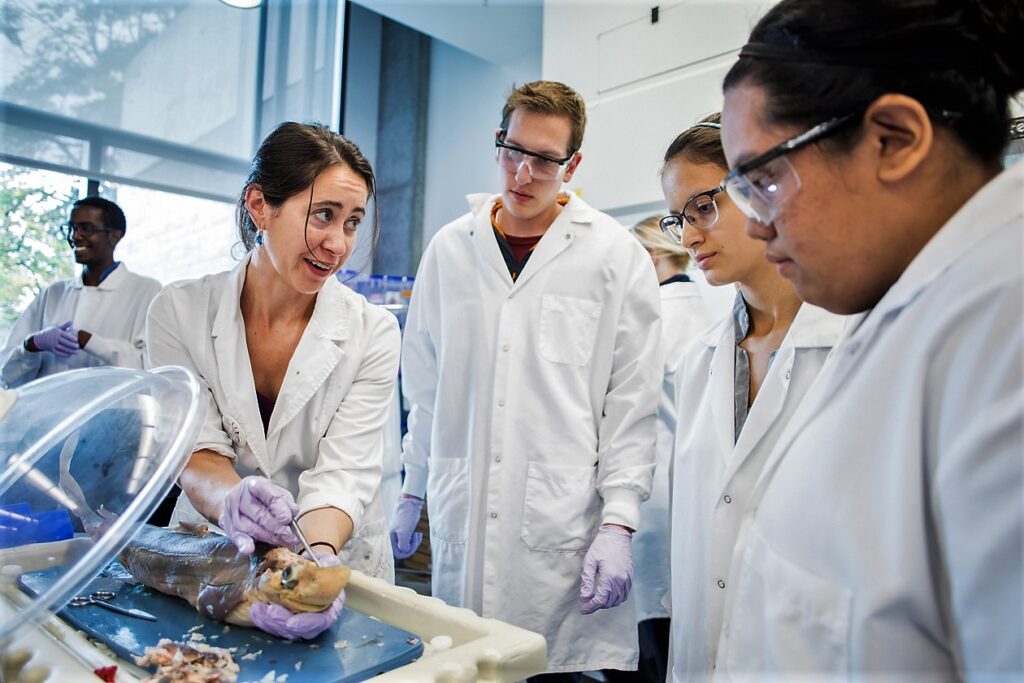
Previously, the class had dissected the brains and nervous systems of crayfish and squid. The shark brains were good for identifying cranial nerves. Later, students would cut into sheep brains and have a chance to examine a human brain.
“When we’re looking at a shark brain, we’re staring at our own embryonic brain,” Price said. “We’re seeing a nice linear layout of it. We’re really getting the basic structures.”
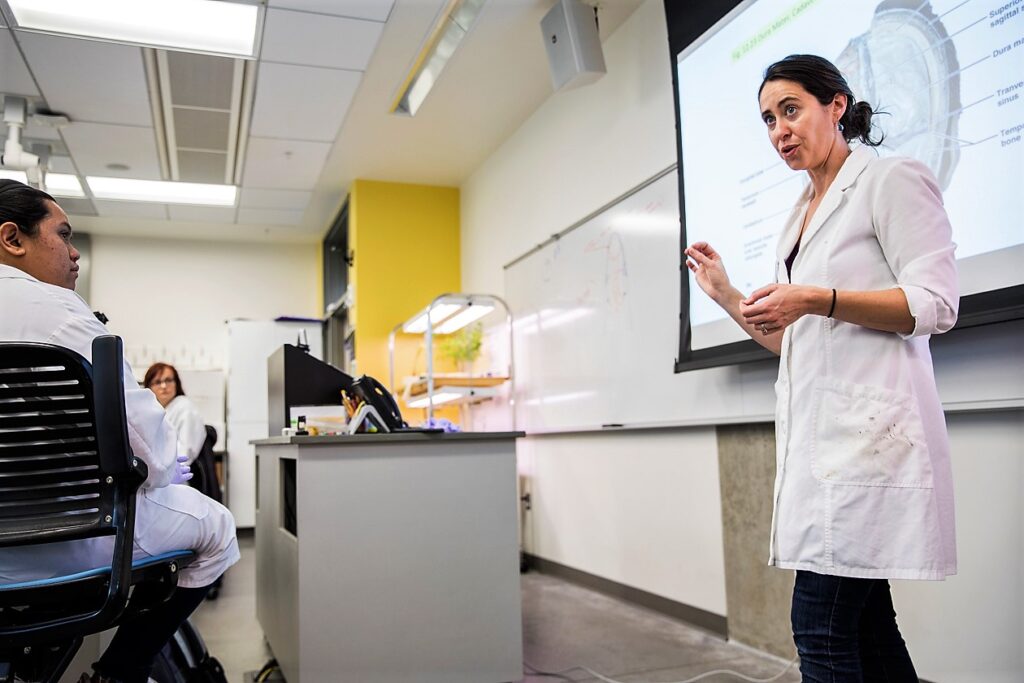
Matan Arazy, a Biology major graduating in fall 2018, said it was intimidating at first to tackle the animal “and scalpel through the skull and unveil the brain, but it’s pretty interesting to see how the system looks in comparison to the model we have on the screen.”
Arazy plans to apply to physical therapy school and knows physiology figures in the deficiencies, diseases and injuries that people encounter.
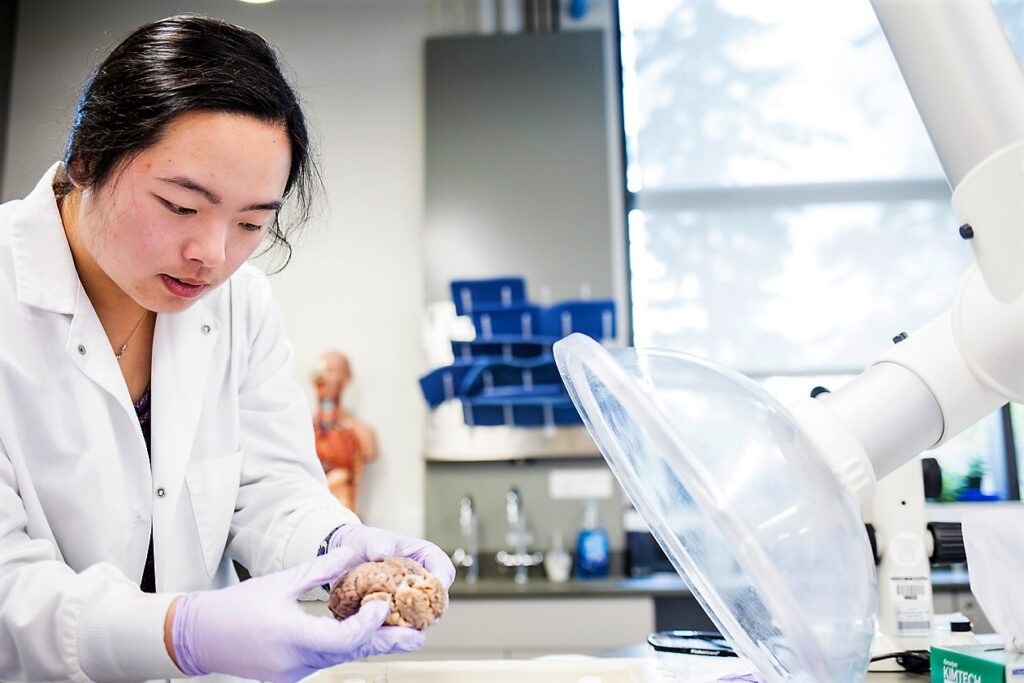
Paula Bersabe, a Public Health major graduating in fall 2018, plans to apply to medical school to pursue a Doctor of Nursing Practice (DNP) degree. “It’s really helpful for me to see different nerves,” she said.
A senior majoring in Health Studies who plans to work in physical therapy, Amanda Knutson said, “It’s a little dramatic, seeing visually what we’re learning in lecture.”
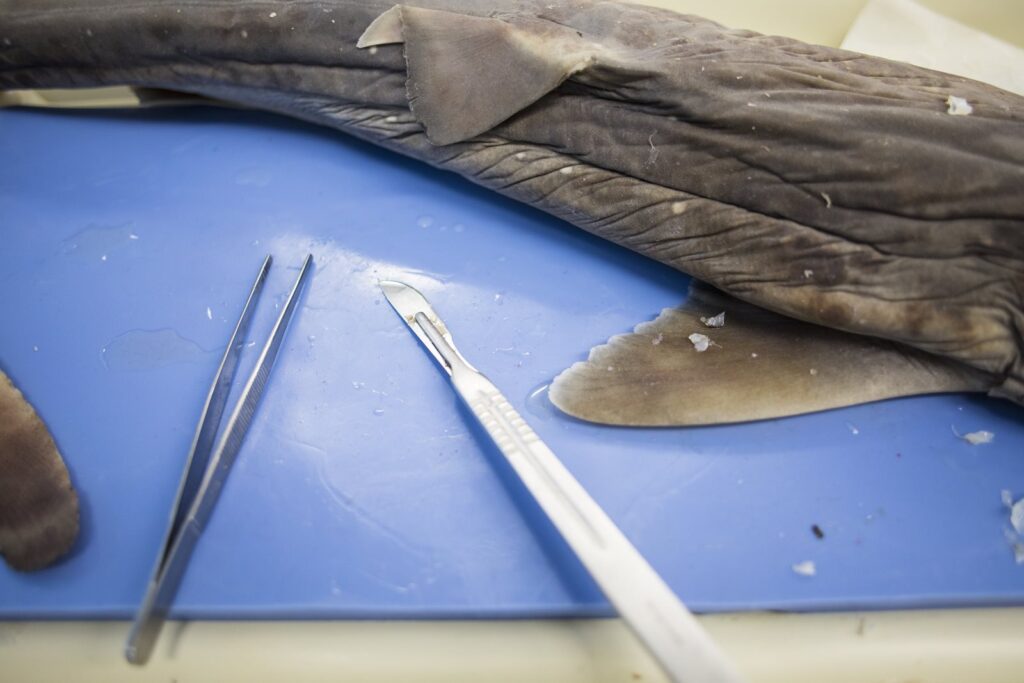
Erika Rodriguez, a Biology major graduating in fall 2019, wanted to compare developmental differences between the shark and sheep brains. She plans to apply to medical school and specialize in nephrology to help people undergoing kidney dialysis.
Wearing white lab coats and vinyl gloves, the students worked quietly in groups, making observations to each other.
“They’re all very professional,” Price said. “They do good work.”
